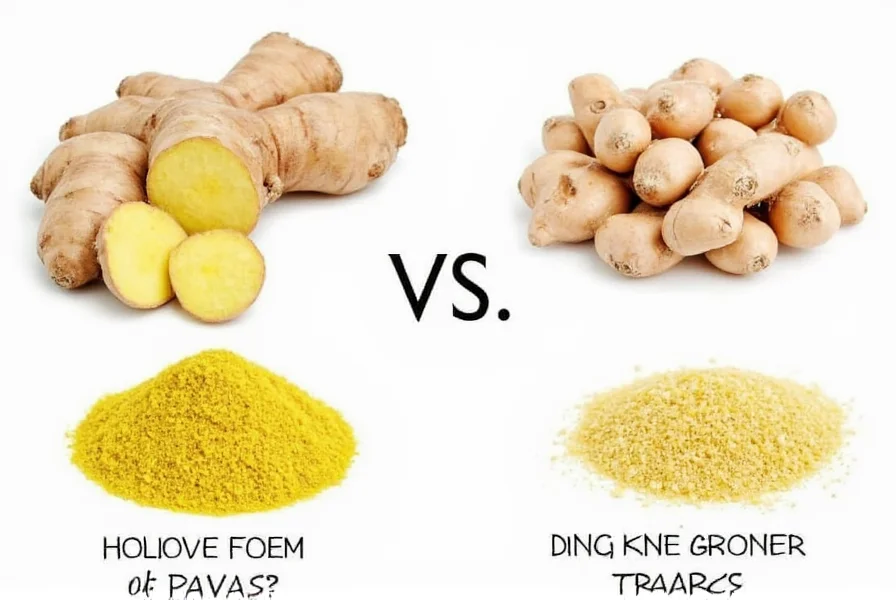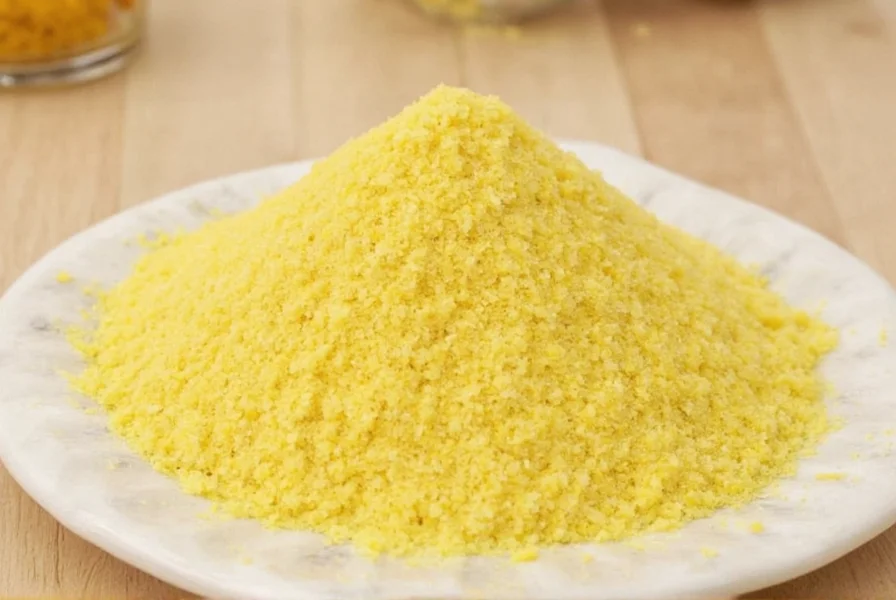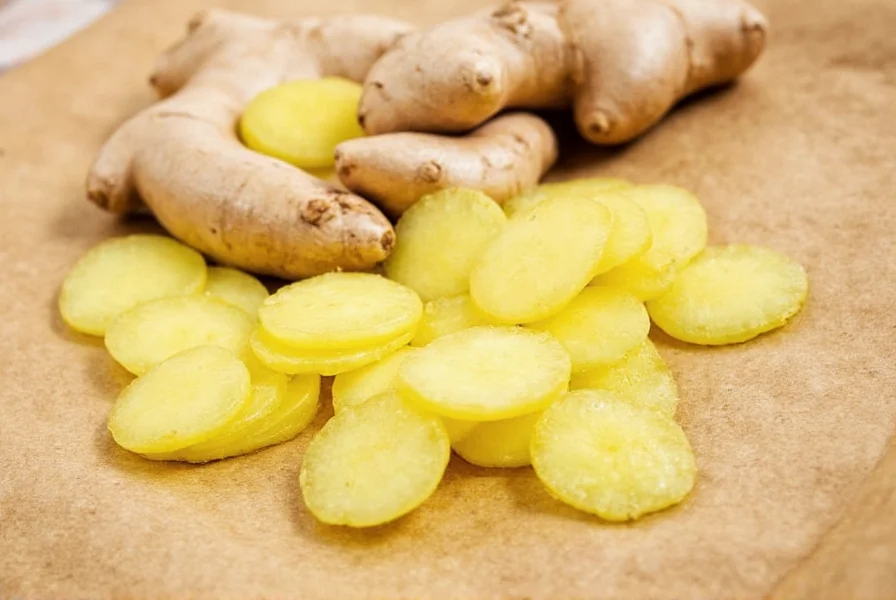Understanding the proper conversion between fresh and ground ginger is essential for achieving perfect flavor balance in your cooking. Many home chefs struggle with recipe substitutions, leading to dishes that are either too mild or overwhelmingly spicy. This comprehensive guide provides accurate measurements, flavor comparisons, and practical substitution tips to help you master ginger conversions in any culinary application.
Understanding Ginger Forms and Their Culinary Impact
Fresh ginger root and ground ginger powder are not interchangeable without proper conversion. Fresh ginger contains approximately 60-70% water content, which significantly affects its potency compared to the dehydrated ground form. When recipes specify one form but you only have the other available, knowing the exact conversion ratio prevents flavor imbalances that can ruin your dish.
The distinctive zing of fresh ginger comes from gingerol, while ground ginger's warmer flavor profile develops from zingerone formed during the drying process. This chemical transformation explains why simply eyeballing substitutions often leads to disappointing results. Professional chefs emphasize that understanding these differences is crucial for recipe success across various cuisines—from Asian stir-fries to baked goods and beverages.
Fresh Ginger to Ground Ginger Conversion Chart
| Fresh Ginger | Ground Ginger Equivalent | Best For |
|---|---|---|
| 1 inch knob (about 1 tbsp grated) | 1/4 tsp ground ginger | Subtle flavor in sauces and dressings |
| 1.5 inches (about 1.5 tbsp grated) | 1/2 tsp ground ginger | Standard substitution in most recipes |
| 3 inches (about 1 oz or 2 tbsp grated) | 3/4 tsp ground ginger | Stronger flavor profiles like curries |
| 5 tablespoons grated | 1 tablespoon ground ginger | General conversion ratio |
When to Use Each Form of Ginger
Certain dishes benefit from specific ginger forms. Fresh ginger shines in applications where its bright, citrusy notes enhance raw preparations or quick-cooking dishes. Think of fresh ginger in sushi ginger, salad dressings, or quick stir-fries where its volatile compounds remain intact. The fibrous texture also provides visual appeal in certain presentations.
Ground ginger works best in baked goods, spice blends, and slow-cooked dishes where its more stable compounds can fully integrate with other ingredients. Its concentrated flavor penetrates liquids more effectively in chai teas and mulled wines. In traditional Indian cooking, ground ginger often appears in garam masala while fresh ginger features prominently in tadka tempering.
Creating Your Own Ground Ginger at Home
Making homemade ground ginger preserves maximum flavor compared to store-bought versions that may lose potency over time. To create your own:
- Select firm, plump fresh ginger roots with smooth skin
- Peel and thinly slice the ginger
- Air-dry or use a food dehydrator at 135°F (57°C) for 8-12 hours
- Grind dried slices in a spice grinder until fine powder forms
- Store in an airtight container away from light and moisture
This fresh ginger to ground ginger conversion process yields a more vibrant product than commercial versions, which often contain anti-caking agents. Homemade ground ginger typically maintains peak flavor for 3-4 months when properly stored, compared to 6-12 months for store-bought varieties.

Common Substitution Mistakes to Avoid
Many cooks make critical errors when substituting between ginger forms. The most frequent mistake involves using equal measurements—1 tablespoon fresh does not equal 1 tablespoon ground. This oversight typically results in under-seasoned dishes when converting ground to fresh, or overpowering heat when using fresh instead of ground.
Another common error involves ignoring recipe context. In delicate custards or light sauces, fresh ginger's fibrous texture can create unpleasant mouthfeel, while ground ginger might provide inconsistent speckling. For marinades requiring ginger's natural enzymes to tenderize meat, fresh ginger works significantly better than ground.
Storage Considerations for Maximum Freshness
Proper storage dramatically affects ginger's shelf life and potency. Fresh ginger root keeps for 2-3 weeks in the refrigerator when stored in a paper bag inside the vegetable drawer. For longer storage, freeze whole or grated ginger in an airtight container for up to 6 months—frozen ginger grates beautifully without thawing.
Ground ginger maintains optimal flavor for 6-12 months when stored in a cool, dark place in an airtight container. Exposure to light and moisture accelerates flavor degradation. To test ground ginger's potency, rub a small amount between your fingers—if the aroma is weak, it's time for replacement. This fresh ginger substitute ground ginger consideration ensures consistent recipe results.

Recipe-Specific Conversion Tips
Different culinary applications require nuanced conversion approaches. For baking, where ginger's flavor must permeate throughout, use 3/4 of the standard conversion ratio (4 tablespoons fresh to 1 tablespoon ground). In liquid-based recipes like soups and stews, use the full 5:1 ratio as the liquid medium helps distribute flavor evenly.
When making ginger tea, fresh ginger provides superior results—simmer 1-inch knob per cup of water for 10-15 minutes. If using ground ginger, start with 1/8 teaspoon per cup and adjust to taste. For pickling applications, fresh ginger's texture holds up better during the preservation process.
Frequently Asked Questions
What is the exact conversion ratio from fresh ginger to ground ginger?
The standard conversion ratio is 5:1—5 tablespoons of fresh grated ginger equals 1 tablespoon of ground ginger. This accounts for the significant moisture loss during the drying process. For smaller quantities, 1 inch of fresh ginger (about 1 tablespoon grated) equals approximately 1/4 teaspoon of ground ginger.
Can I substitute ground ginger for fresh in all recipes?
While substitution is possible, it's not always ideal. Ground ginger works best in baked goods, spice blends, and slow-cooked dishes where its concentrated flavor can fully integrate. Fresh ginger is preferable for raw preparations, quick-cooking dishes, and applications where texture matters. Some recipes, like those relying on fresh ginger's enzymes for tenderizing meat, won't work well with ground ginger.
Why does my dish taste different when I substitute ginger forms?
Fresh and ground ginger have different chemical compositions. Fresh ginger contains gingerol which provides a bright, spicy heat, while ground ginger contains more zingerone from the drying process, giving a warmer, mellower flavor. The moisture content difference also affects how the flavor distributes in your dish. Using improper conversion ratios is the most common reason for flavor discrepancies.
How can I make my own ground ginger from fresh?
Peel and thinly slice fresh ginger, then dehydrate at 135°F (57°C) for 8-12 hours until completely dry and brittle. Grind the dried slices in a spice grinder until fine. Store in an airtight container away from light. Homemade ground ginger maintains peak flavor for 3-4 months, offering superior taste compared to commercial versions that may contain anti-caking agents.
Does ground ginger have the same health benefits as fresh ginger?
While both forms retain many beneficial compounds, fresh ginger generally contains higher levels of gingerol, the compound responsible for many of ginger's health benefits. The drying process converts some gingerol to zingerone, which has different properties. For maximum health benefits, fresh ginger is preferable, though ground ginger still offers significant antioxidant and anti-inflammatory properties when used in appropriate quantities.











 浙公网安备
33010002000092号
浙公网安备
33010002000092号 浙B2-20120091-4
浙B2-20120091-4